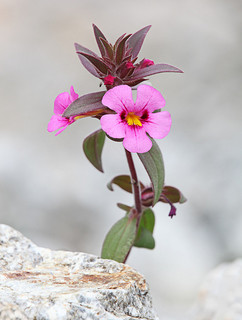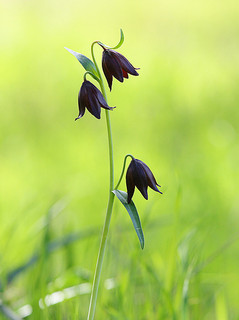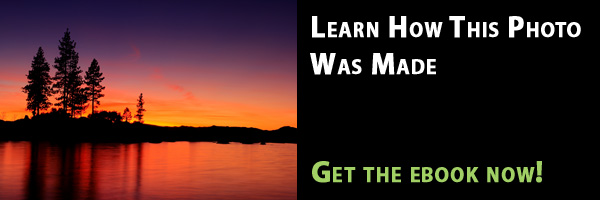
Here’s a short intro to the different types of light you’ll experience, along with a few ideas of what to photograph in each type of light:
Clear Skies

Clear skies produce the brightest and most harsh natural light. Without any clouds in the sky to soften the light, the sun will shine brightly on everything and create harsh shadows (shaded areas will be extra dark).
This usually makes exposure difficult for things like wildflowers because your camera cannot capture that wide range of brightness (everything from the bright colors of the flower to the dark colors of the shadows).
So, if you’re shooting in bright sunlight, then it’s important to be aware of these harsh shadows and compose your shots to avoid them (unless of course you want them in your scene).
Clear skies are great for times when you need a fast shutter speed, because there’s always plenty of sunlight available. They’re also great for capturing dark shadows, which is helpful for photographing jagged mountains or hills because it helps emphasize texture and depth.
Overcast

Partly Cloudy

However, it’s also annoying to photograph stuff under partly cloudy skies because you’ll have to constantly adjust your exposures as the sun peaks in and out of clouds.
Shade

Shade produces balanced light that’s similar to overcast skies. But, colors usually don’t stand out as much under shade as they do with overcast skies. Shade is usually much darker than overcast conditions, so it also means longer shutter speeds (which can become an issue when you’re photographing something that’s moving). Sometimes it’s good for wildflowers or anything that’s not moving (allowing you to use longer shutter speeds and still get sharp photos).
Sunrise

Sunrise tends to produce a somewhat cold light (i.e. sunrise colors usually have more of a blue tint than sunset colors). It’s an excellent time to capture some stunning colors in the sky, especially if the clouds cooperate. Also, once the sun has risen, you have about a 15-minute window to capture some excellent light on the landscape. In these first 15 minutes after sunrise, the sunlight casts a very warm light on the landscape, which really helps saturate your images.
Sunset

Sunset tends to produce a warm light (sunset colors are usually more red than sunrise colors). Like sunrise, it’s also an excellent time to capture some awesome colors in the sky. And also like sunrise, when the sun is low on the horizon, it casts a very warm light on the landscape, which is great for capturing powerful landscape images.
Moonlight
Moonlight is an often overlooked type of light, but it’s another lighting condition you should consider because it produces a very unique look. A landscape that’s lit by the moon will have a bluish tint and it’ll have an eerie look to it (great for photographing desert scenes!). If you photograph a landscape when the moon is still somewhat low on the horizon, then you’ll also get some nice shadows in your image.
You might think that the best time to photograph a landscape under moonlight is on the night of a full moon, but you might also want to experiment with nights where the moon is only partly full. This will help you capture more stars in the sky, because as the moon gets more full it also makes it harder to see (and photograph) the stars.
What did I miss?
Is there another lighting condition that you think I missed? Or, is there something you like to photograph in a specific lighting condition? If so, please share with us by leaving a comment below, thanks! 🙂
Get more great tips in our free weekly newsletter.
 About the Author: Steve Berardi is a naturalist, photographer, software engineer, and founder of PhotoNaturalist. You can usually find him hiking in the beautiful mountains and deserts of southern California.
About the Author: Steve Berardi is a naturalist, photographer, software engineer, and founder of PhotoNaturalist. You can usually find him hiking in the beautiful mountains and deserts of southern California.

You forgot night shots without moon, when theres basically no light 🙂
Using flash, theres no deep contrast in direct sun, so best time for shooting insects etc
I love shooting under moonlight! Thanks for including it here.
thanks for your great tips but nowa days no body care about how to take take picture because of so many ways how to manipulate the pic. ex: photoshop.